Tuesday, 23 October 2012 Written by Ivan Radford
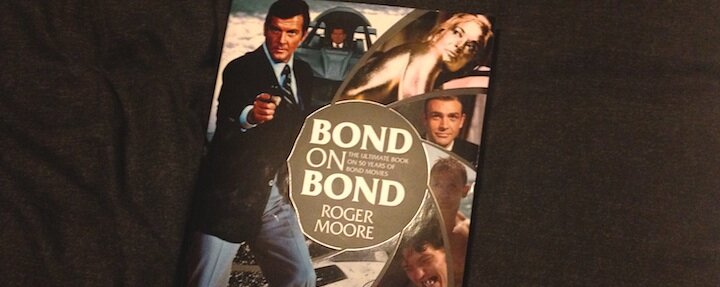
"What I can't remember, I'll just have to make up…"
As we count down the days to Skyfall’s cinema release, I’m not going to bother ranking all the different Bonds in a row – we all know Roger Moore is bottom anyway – but one 007 thing I’ve been guiltily enjoying is Moore’s book, Bond on Bond.
Sir Roger may have been the worst Bond, too many laughs and not enough anything else, but Bond on Bond has taught me to love the guy.
“Back then I could leap out of a chair without fear of my knees cracking; could chew a toffee without fear of losing a tooth; could admire my flowing locks and my bronzed, slim torso,” he gushes in the book.
"With a twitch of the old eyebrow I set pulses racing across the world. These days it’s my pacemaker that keeps my pulse racing.”
The book itself, which runs a decent 224 pages, is well presented with lots of sexy pictures and movie stills. But it doesn’t contain much critique of the franchise – he says Daniel Craig is the best 007, but that’s about it – instead turning into a roundup of facts and figures have been covered in better (and now cheaper) anthologies.
Why bother with it? Because Moore’s dry prose is rather charming stuff. It’s like listening to your granddad waffle on about something for hours - but that something happens to be the longest-running franchise in movie history..
Here are some my favourite bits…
Read more...
Wednesday, 02 May 2012 Written by Ivan Radford
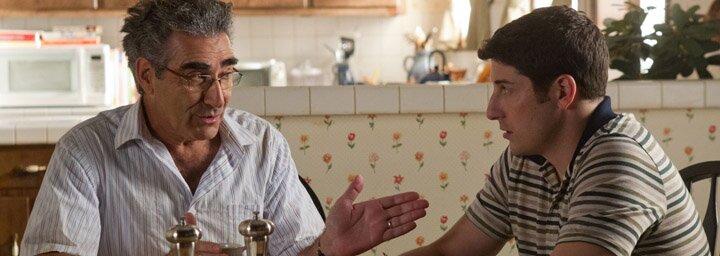 "Hey son, you want to know the secret of having really awesome eyebrows?" "Hey son, you want to know the secret of having really awesome eyebrows?"
Whether you're an America Pie fan or not, it's hard to deny that American Reunion brings together some of the most-loved characters in movie history. I refer, of course, to Eugene Levy's eyebrows.
Yes. Jim's heavily-eyebrowed dad has been an object of my eyebrow-loving obsession for some time - way before Jean Dujardin arrived on the scene.
And so, in honour of the world famous LevyebrowsTM, here are the world's top movie eyebrows - all of which aren't as awesome as Eugene Levy's.
Read more...
Friday, 30 December 2011 Written by Ivan Radford
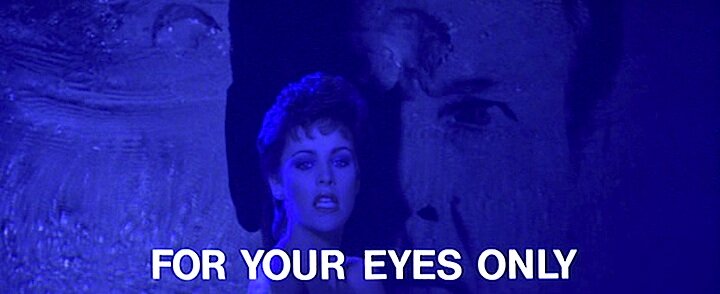
BlogalongaBond. One Bond film a month until Bond 23 turns up.
I make a point of always trying to watch a film to the end, even Horrid Henry: The Movie. But with For Your Eyes Only, I did something rare: I stopped watching. Out of sheer boredom. For the rest of Christmas, Roger Moore’s smug face taunted me from his DVD over the top of my turkey with a reproachful wink. (Timothy Dalton would never do that.)
A casual jog after Moonraker’s sprint through fountains of spraying crap, For Your Eyes Only tried to scale things back and give 007 something more down-to-earth to deal with. It begins this grounded approach by killing off Blofeld with a remote-controlled helicopter while 007 makes jokes about his hair.
A fresh start for the franchise? Not quite. Instead, the 12th entry in the series is the one thing worse than laughable: it’s completely forgettable. There's a lost encryption device, a woman wanting revenge, a young girl ice skating... Even with impressive stunts, a bobsleigh set piece and a neat Citroen car chase, it couldn’t be more boring if you recited the plot in the middle of a lecture about the Eurozone crisis hosted by Orlando Bloom.
Returning to the DVD a few days later, I discovered I couldn’t remember what was going on. I was sure that at some point in the last 30 years someone had made a film called For Your Eyes Only - and that I had definitely watched it - but for the life of me couldn’t remember a single thing about it. A lot like Quantum of Solace.
Ok, that’s a lie. I can remember one thing: the theme song. Beginning with Bill Conti’s titular five-note fanfare of gentle synth pop, it buried into my brain like an advert for Lenor fabric softener, quietly calling out at 3am: “You must keep watching…”
Clearly someone out there thought it was a good song – alongside Live and Let Die and Nobody Does It Better, it’s one of the few Bond songs to be nominated for an Academy Award (allowing the film to be called “the Oscar-nominated For Your Eyes Only”). Conti did a decent job, then, of rousing the awards voters. How did he replace John Barry to successfully create such a crucial element in the Bond formula? Well, it turns out he had this informational pamphlet in his pocket – an up-to-date version of which I coincidentally found in my DVD box.
Here’s a guide to writing a Bond song...
Read more...
Unsung Movie Santas: Roger Moore
Wednesday, 07 December 2011 Written by Ivan Radford
Yes. In 2004, this happened.
Director Dan Chambers - who once made a cartoon in which every creature inhabiting the seven layers of hell had the face of Roger Moore - convinced the world's worst 007 to play Santa Claus in a short seasonal film for UNICEF (Roger has done lots of UNICEF work), titled The Fly Who Loved Me.
Read more...
Friday, 18 November 2011 Written by Ivan Radford
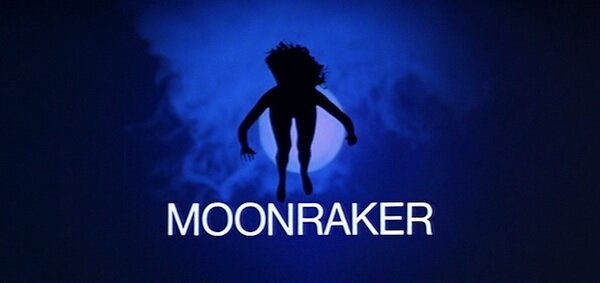 BlogalongaBond. One Bond film a month until Bond 23 turns up. BlogalongaBond. One Bond film a month until Bond 23 turns up.
Moonraker. The film that actually manages to make less sense than its meaningless title song. No-one knows what a Moonraker is. Or what it does. Or how anything can go “like the Moonraker goes". And no-one really cares.
Following The Man with the Golden Gun – the Moonraker of 1974 – it fell to Lewis Gilbert to fart out this turd of unscientific cackwaffle. And so we got Moonraker – the Moonraker of 1979.
A film more concerned with sex, one-liners and lasers than anything resembling a plot, Christopher Wood spent his time shoehorning in references to The Magnificent Seven and Close Encounters of the Third Kind rather than writing a script. And it shows. Boy, does it show.
Jumping from one incoherent action sequence to the next, Richard Graydon and Jake Lombard’s stuntwork is astonishing stuff, but doesn’t offer any emotional pay-off. Every time Bond escapes a life-threatening situation, you’re not elated or even a little bit relieved. Instead, you end up stabbing yourself in the face with a plastic fork, shouting “WHY WON’T YOU DIE?”
It’s no surprise then, that the one redeeming aspect of Moonraker is the fact that it ends. After the introduction, in which Roger Moore falls out of a plane without a parachute and (spoiler) DOESN’T die, the 126 interminable minutes are begging for a decent finale. Or any finale at all. And Moonraker almost manages it – in many ways, it’s the most famous ending to a Bond film of all time.
Which is why I wasn’t surprised to find this informative leaflet in my special edition DVD box set. Right next to the rubber tube and canister of carbon monoxide.
Read more...
Saturday, 29 October 2011 Written by Ivan Radford
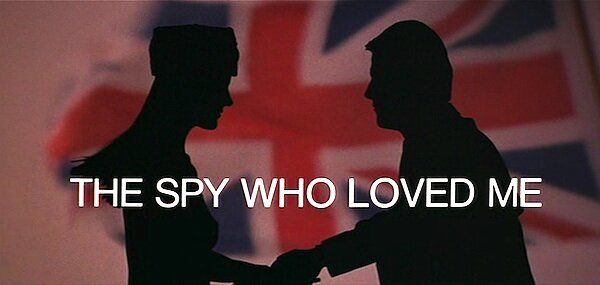
BlogalongaBond. One Bond film a month until Bond 23 turns up.
Glang. Glang-a-lang-a-lang-a-lang-a-lang-a-lang.
Given the existence of Alan Partridge's BlogalongaBond entry, there's almost nothing left to say about The Spy Who Loved Me. Easily the best of the Moore era, the 1977 epic of silly proportions has nothing to do with Fleming's book (a fascinating female-narrated tale). Instead, it follows You Only Live Twice and throws everything at the screen, from spectacular ski stunts (see George Lazenby's guide to skiing) to submarine-eating tankers and underwater cars.
But alongside the nonsense, (BAFTA and Oscar-nominated) director Lewis Gilbert fashions some impressively serious moments. There's the eerie sequence in the Pyramids, where ancient architecture is overlaid with green lights and loud synths, and the bit where Bond snaps about his dead wife, Tracy. At another point, he casually knocks a guy off a building without hesitation - an unexpectedly cold move that almost tricks you into thinking Roger Moore is a good 007 - providing you've never seen any of his other Bond films.
Apart from the technical brilliance and Roger Moore's surprisingly good performance, The Spy Who Loved Me brought something else iconic to the 007 franchise: Jaws. Richard Kiel's towering villain adds a much-needed sense of danger to events. Even at an interview at Birmingham's The Electric cinema a few years ago, he was intimidating. And that was after he gave someone in the audience a hug.
So it wasn't a surprise to discover this informative pamphlet in my The Spy Who Loved Me DVD box...
Read more...
Saturday, 24 September 2011 Written by Ivan Radford

BlogalongaBond. One Bond film a month until Bond 23 turns up next year.
It's 1974. Moonraker doesn't exist yet. But Guy Hamilton doesn't let that stop his own attempt at making the worst Bond movie of all time. And he's astonishingly successful, producing a solid gold piece of turdy cackwaffle. Ladies and gentlemen, I present to you The Man with the Golden Gun - The Moonraker of 1974.
The worst part of watching the film? Knowing that they had a great book to base the whole thing on. Adaptations don't have to stick to the words on the page, but when a novel is ready-made for a film treatment, why create something inferior from scratch?
Published posthumously in 1965, Ian Fleming's thriller was a proper old-school spy yarn. It saw an old, out-of-shape Bond return from his MIA status after You Only Live Twice's failed mission. Dazed, confused, and convinced he was a Japanese fisherman, Bond was swiftly taken in by the KGB, brainwashed and sent back to London to assassinate M.
Whether Fleming finished it before dying or not, it's a corker of an opening that begs to be made into a film - why Richard Maibaum and Tom Mankiewicz chose to leave it out of the script is a source of constant bafflement. His brain unscrambled, Bond is assigned to track down Francisco Paco "Pistols" Scaramanga, last seen somewhere in the Caribbean. Not because Scaramanga sent a bullet to MI6 (NONSENSE NONSENSE NONSENSE) but because M reckons he's the right-sized kind of target for 007 to get his mojo back.
What follows is 150 pages of 007 sitting around a half-finished hotel, working his way into Scaramanga's inner circle and waiting for the chance to shoot him. With this ridiculously brilliant source material in mind (perhaps my favourite of Fleming's Bond books), I was unsurprised to find this informative pamphlet addressed to Albert R. Broccoli in my DVD case...
Read more...
Saturday, 20 August 2011 Written by Ivan Radford
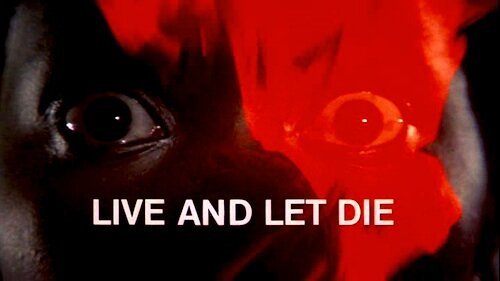
BlogalongaBond. One Bond film a month until Bond 23 turns up in November next year.
Not content with cheesifying James Bond in Diamonds Are Forever, director Guy Hamilton returned once again to take the formula established by Goldfinger to unnatural extremes with one of the worst films in the entire Bond canon: The Man with the Golden Gun.
Before that, however, he made Live and Let Die. And it was quite a lot of run really. If by fun, you mean camp, silly and obviously made in the 1970s.
How can you deduce its 1973 vintage? Well, aside from the clothes, the Paul McCartney & Wings theme song and the fact that it stars Roger Moore as 007 (before his one-liners completely took over the scripts), Live and Let Die is marked out as a product of its time by the number of Afros wandering around on set.
Of course, these Afros are attached to people. And these people are, more often than not, black. It was clearly a great step up in equality for black actors to be seen playing parts that weren't just Henchman#3 or Man who Sails Boat. With its entertaining use (or perpetuation) of blaxploitation stereotypes, you could almost say Live and Let Die was the first truly politically correct film of the decade. Which is why I wasn't surprised to find this empowering pamphlet in my special edition 007 DVD box.
Read more...
Thursday, 11 August 2011 Written by Ivan Radford
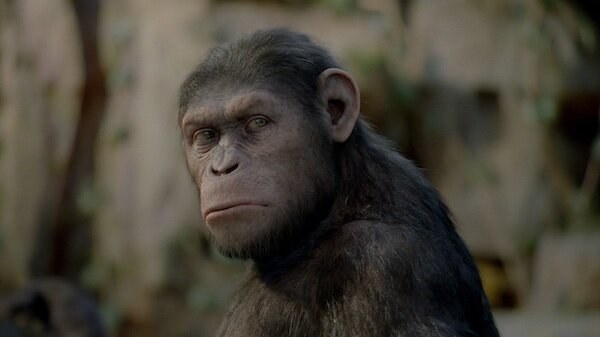
If Rise of the Planet of the Apes proves anything, it's not that blockbusters can be smart or that James Franco did deserve that Oscar nomination, it's that CGI apes can be super mega realistic. In fact, they can be more emotionally engaging than most human actors.
Which begs the question: why don't more movies feature CGI apes? We could keep Andy Serkis motion capturing on a loop throughout the year and use computerised chimps in EVERYTHING.
They could replace Matthew McConaughey in all of his rom-coms. Or be digitally substituted for Roger Moore in old James Bond films. If we embrace this revolutionary new technology, we could improve any rubbish movie just by adding apes. (Yes, even Moonraker.)
But just in case you're not convinced, here's conclusive proof (read: pathetic excuse for Photoshopping) that I'm right.
Read more...
Sunday, 07 August 2011 Written by Ivan Radford

Director: Rupert Wyatt
Cast: James Franco, Andy Serkis, John Lithgow, David Oyelowo
Certificate: 12A
Trailer
Blimey. Go back a few weeks and we were all making jokes about Deep Blue Sea. But Rise of the Planet of the Apes is even better than that. It's Deep Blue Sea, but with actual characters instead of sharks - if by characters, you mean apes. And boy, do those apes know how to rise. Bridges! Crayons! Horses! Helicopters! There's nothing they won't rise against.
Read more...
|





 "Hey son, you want to know the secret of having really awesome eyebrows?"
"Hey son, you want to know the secret of having really awesome eyebrows?"





